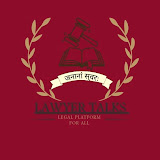Table of Contents
ToggleIn Short
- Supreme Court says downloading child porn is a punishable offence
- Overturns court order that nixed case against man charged for watching child porn
- Asks Centre to bring law to replace ‘child pornography’ term
The Supreme Court judgment on Monday on sexual exploitation of minors signals a necessary broadening of the conversation. In a landmark ruling, it said that viewing, possession and storage of sexually explicit materials involving minors constitute a crime under the Protection of Children from Sexual Offences (POCSO) Act and the Information Technology (IT) Act, whether or not it is shared or transmitted further. The ruling overrides a January order by the Madras High Court that had held that “mere possession” or storage of child pornography was not an offence under Section 67-B of the IT Act. But this expansion of the ambit of legal action against such exploitation also raises a question about guard rails, and about whether harsher laws are better deterrents. Does this view of the law, that equates possession with criminal intent, place the burden of proof on the accused? This raises concerns at a time when the state has been known to weaponize laws and curb freedoms, especially of the voiceless and vulnerable.
The apex court rightly says that “Child sexual exploitation is one of the most heinous crimes imaginable, and the offence of child pornography is equally as heinous if not more, as in the latter the victimization and exploitation of the child do not end with the initial act of abuse. It, in essence, turns the singular incident of abuse into a ripple of trauma-inducing acts where the rights and dignity of the child is continuously violated each time such material is viewed or shared”. But this approach, while empathetic to victims, may not keep enough room for kinds of adolescent behavior which require sensitive handling, not criminalization, including online exploration of sexuality. The ruling also sidesteps the question of regulation of what it recommends be referred to as “child sexual exploitative and abuse material” (CSEAM) instead of “child pornography”, and it does not recognize the possibilities of rehabilitation or the necessity of the infrastructure that is required for it. Its emphasis on mandatory reporting downplays the risk of facing apathy, victim blaming and harassment by the police.
What Was Madras High Court Order All About?
The Madras High Court on January 11 quashed the criminal proceedings against a 28-year-old man who was charged with downloading pornographic content involving children on his mobile phone.
The high court had said that children these days were grappling with the serious issue of watching pornography and instead of punishing them, the society must be “mature enough” to educate them.The high court had quashed the criminal case against S Harish under the POCSO Act, 2012 and IT Act, 2000.
In order to constitute an offence under section 67B of the IT Act, an accused must have published, transmitted or created material depicting children in a sexually explicit act or conduct, it had said.
“A careful reading of this provision does not make watching child pornography, per se, an offence under section 67B of the Information Technology Act, 2000,” the high court had added.
Even though the said section of the IT Act has been widely worded, it does not cover a case where a person has merely downloaded child pornography in an electronic gadget and watched the same, without doing anything more, it had said.
Admittedly, two videos involving boys were downloaded and were available on the petitioner’s mobile phone, and those were neither published nor transmitted to others and were within the petitioner’s private domain, it had said.
The Madras High Court had, however, expressed concern over children watching pornography.
Viewing pornography can have negative consequences on teenagers down the line, affecting both their psychological and physical well-being, it had said.
What Did Supreme Court Say On ‘Child Pornography’?
The Supreme Court bench headed by Chief Justice D Y Chandrachud and comprising Justices J B Pardiwala and Manoj Misra, made some notable changes to the Protection of Children from Sexual Offences (POCSO) Act and Information Technology (IT) Act regarding the guidelines on child pornography and how to prevent exploitation of children.
“We have said about lingering impact of child pornography on victimisation and abuse of children and on role to report an offence, including role of society and stakeholders,” the bench said.
“We have suggested to Parliament to bring an amendment to POCSO… so that definition of child pornography can be referred to as ‘child sexually abusive and exploitative material’. We have suggested an Ordinance can be brought in,” it added.
According to Supreme Court verdict –
- Watching and downloading child pornography are offences under the POCSO Act and IT Act.
- The term “child sexually abusive and exploitative material” to be used instead of ‘child pornography’.
- A person who opened a child pornographic link without knowledge will be liable on failure to report to authorities.
- “Any form of intangible or constructive possession of any child pornographic material will also amount to “possession” under Section 15 of the POCSO in terms of the Doctrine of Constructive Possession”, said SC bench.
- Certain guidelines to be followed on child pornography and the bench laid its legal consequences.
The SC judgment has its heart in the right place, but it is imperative to ensure that its stringency is not misused to penalise rather than to protect.

